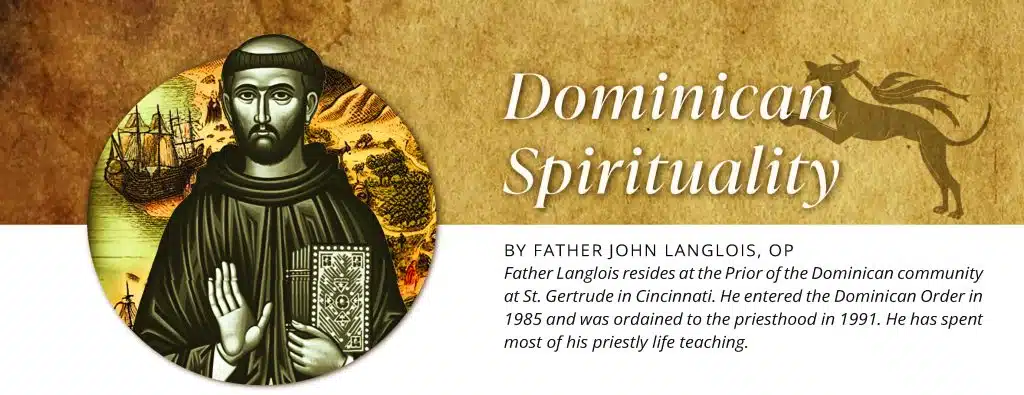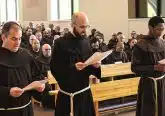Catholic Spirituality: Dominicans
To understand Dominican spirituality, one needs to know the circumstances that prompted the founding of the Order of Preachers in the early 13th century St. Dominic founded the Order in 1216 in response to the Albigensian heresy spreading throughout southern France. Many people were falling prey to this heresy because of a lack of solid doctrinal preaching. Dominic proposed founding a new Order wholly dedicated to forming religious, through a life of contemplation and study, for the ministry of preaching. Contemplation of the Word of God and dedication to the study of sacred doctrine remain at the heart of Dominican spirituality.
A principal motto of the Order is “to contemplate, and then to share with others the fruits of one’s contemplation.” In other words, in Dominican spirituality, contemplation and prayer are not just a means for one’s personal spiritual growth, but are meant to lead to action: preaching, witnessing, sharing the faith with others. That said, commitment to a life of prayer must come first, for it is only when we devote time to prayer and meditation on the Word of God that we then have something worth sharing with others. Daily meditative reading of the
Word of God, or lectio divina, is a key element of Dominican prayer. But St. Dominic recognized that, although prayer and contemplation are the foundation for effective preaching, study of sacred doctrine and Church teachings is also necessary. The Albigensians he sought to convert back to the Church misunderstood and denied many of the faith’s central mysteries. It was necessary, then, for Dominic and his early companions to answer their questions intelligently and accurately. And so, Dominican spirituality is also marked by a commitment to intellectual formation in the faith.
Finally, Marian devotion, particularly praying the Rosary, figures prominently in Dominican spirituality. It is traditionally believed that when St. Dominic experienced difficulties in his preaching to the Albigensians, Our Lady appeared and revealed the Rosary to him, saying that if he prayed it, his preaching would enjoy greater success in obtaining converts. Historians today question this tradition’s veracity since it is not mentioned in the early documents of the Order’s history. Regardless, the reality is that Dominicans have been associated with promotion of the Rosary devotion since the early 15th century. And this makes sense, because the Rosary is primarily a prayer that aids contemplation.
Consisting of 150 Hail Marys, the Rosary was originally known as a “lay psalter” or the layperson’s way of imitating the prayer of monks, who chanted the Old Testament’s 150 psalms as their primary form of worship. Eventually, the 150 Hail Marys were divided into groups of 10, and “mysteries,” or significant moments in the lives of Jesus and Mary, were associated with each grouping. The idea was that the person praying the Rosary would meditate on a particular mystery, like the Birth of the Lord, while praying a decade of Hail Marys.
Through this contemplative prayer, focused on the Gospel, a person can come to a deeper appreciation for the life of our Lord, His saving mission and the purpose of our lives. The Rosary, then, is very much a Dominican way of praying, of coming to a deeper relationship with Jesus and Mary and of supporting Dominicans in their study, contemplation and preaching of God’s Word.














